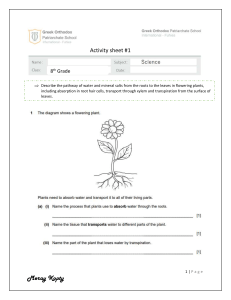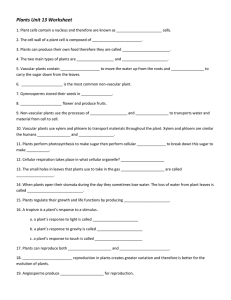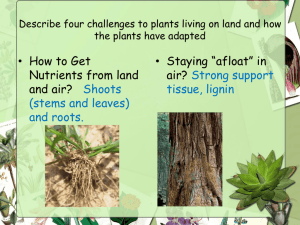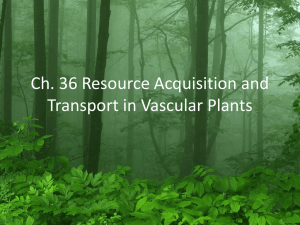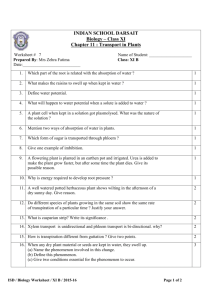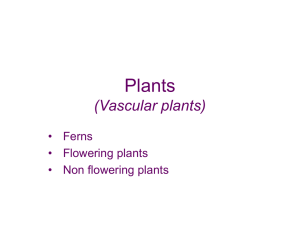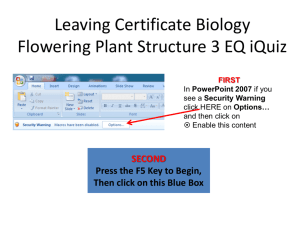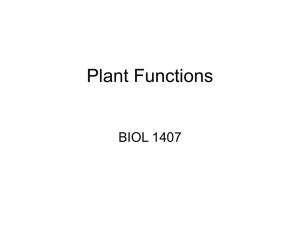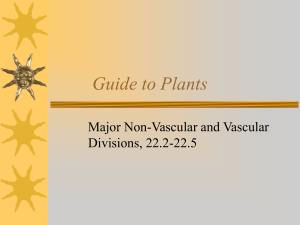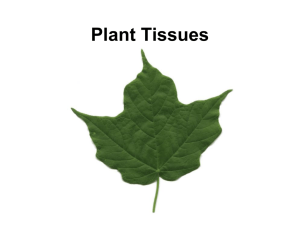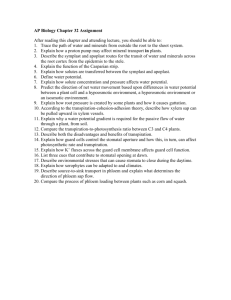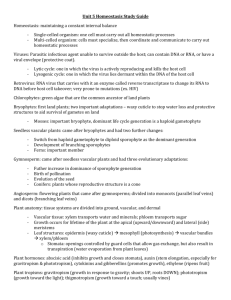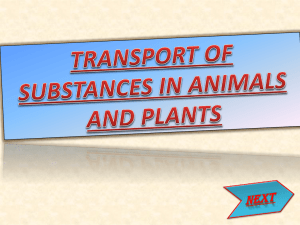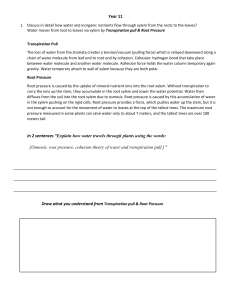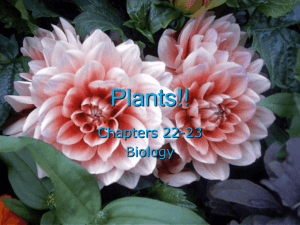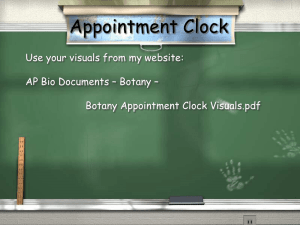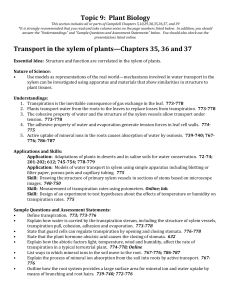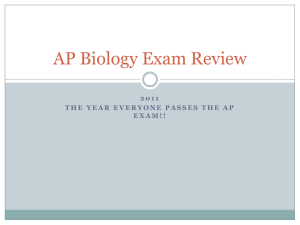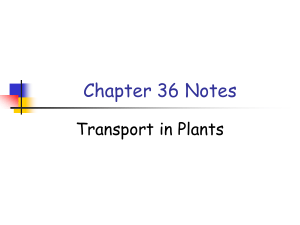Plant Guided Reading
advertisement
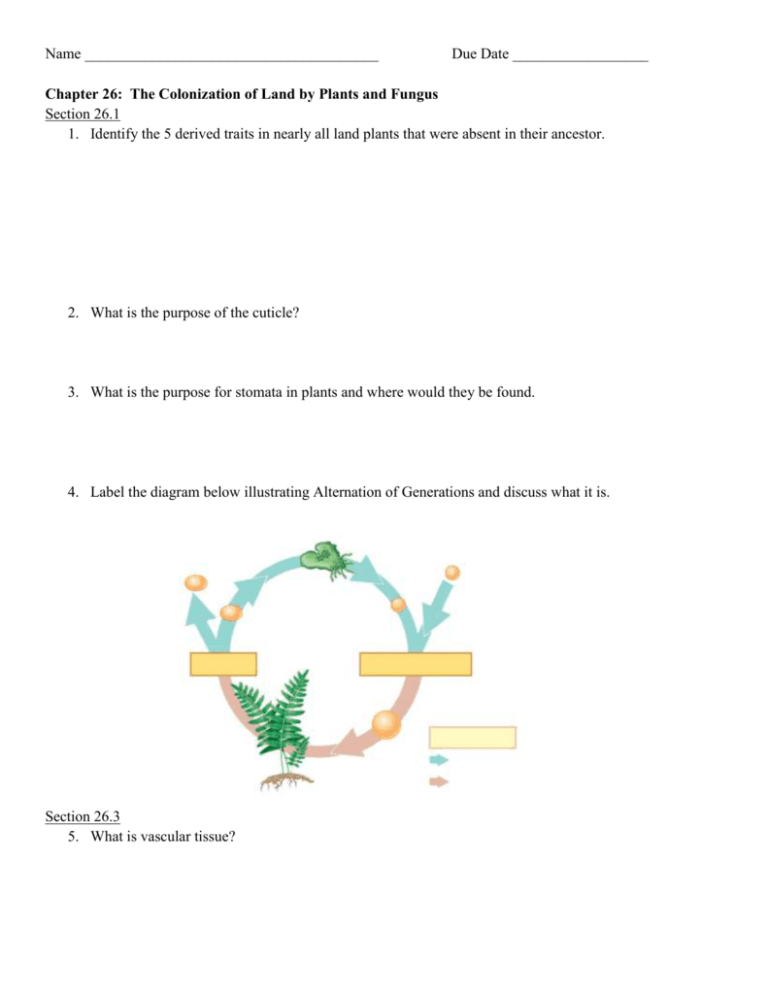
Name _______________________________________ Due Date __________________ Chapter 26: The Colonization of Land by Plants and Fungus Section 26.1 1. Identify the 5 derived traits in nearly all land plants that were absent in their ancestor. 2. What is the purpose of the cuticle? 3. What is the purpose for stomata in plants and where would they be found. 4. Label the diagram below illustrating Alternation of Generations and discuss what it is. Section 26.3 5. What is vascular tissue? 6. Briefly discuss the vascular tissue found in vascular plants: a. Xylem: b. Phloem: 7. What are the functions of: a. Roots: b. Leaves: 8. What actually are seeds? 9. Distinguish between a Gymnosperm and an Angiosperm. 10. What is an ovule? 11. Discuss what pollen grains are. 12. Discuss the evolutionary advantage of seeds 13. Discuss the function of a flower and label the diagram of the flower 14. This will keep you from eating fruits but I want you to tell me the definition of a fruit. 15. What is the purpose for the fruit in angiosperms? 16. How are seeds adapted for seed dispersal? Chapter 28: Plant Structure and Growth Section 28.1 17. Angiosperms are broken up into two groups, monocots and dicots. What differentiates the two? Section 28.2 18. How is plant growth different from that of animals? 19. Discuss the two main locations for plant growth 20. How is plant growth controlled at the gene level? Chapter 29: Resource Acquisition and Transport in Vascular Plants Section 29.1 21. What has allowed plants to colonize on land? Section 29.2 22. Discuss the 3 roles of H+ ions in basic transport in plant cells. 23. We have already discussed osmosis in plants this year and water potential but it never hurts to go over it again. What exactly is water potential? Identify the two components of water potential. 24. In which direction do free water molecules ALWAYS move? Give an example. 25. Write out the formula for water potential and explain what each symbol means. 26. What is the solute potential (osmotic potential) of pure water? 27. What is the pressure potential of an empty xylem cell? 28. Which direction will water ALWAYS move in terms of water potential? 29. Label the plants below when place in water, in terms of water potential. 30. What is the purpose for aquaporins in plant cells? Section 29.5 31. How much water daily is lost by an average size tree? 32. Where does the absorption of water take place in a plant (specifically)? 33. What is transpiration? (this is a really important concept for you to remember and understand) 34. Explain the cohesion-tension hypothesis in reference to the movement of water up the xylem. 35. Explain transpiration pull in reference to the movement of water up the xylem. 36. Label the diagram below showing transpirational pull. 37. What regulates the rate of transpiration? 38. Okay, so we discussed water movement. Now it’s time for the movement of sugars in the phloem. Using sugar source and sugar sink, explain how the sugar is transported around a plant. Chapter 30: Reproduction and Domestication of Flowering Plants 39. What is the sporophyte generation in plants? The gametophyte generation? 40. Label the diagram of the life cycle of an angiosperm (flowering plant) 41. Differentiate between fertilization and pollination Section 30.2 42. What is vegetative (propagation) reproduction? Chapter 31: Plant Responses to Internal and External Signals Section 31.1 43. Define and explain what a hormone is and does. 44 .Define the term tropism and give an example of it. 45. Explain a phototrophic response and how it benefits the plant. 46. What does light exposure do to the growth of plant cells? 47. Discuss the Darwins’ experiment with a grass coleoptiles and light. 48. How did the Boysen-Jensen experiment modifiy the Darwins’ mechanism for plant differential growth? 49. Now look at Went’s experiment. What conclusion did he draw about the differential plant growth? Identify the plant hormone response for this response. 50. Discuss the location and function of auxin as a plant hormone. 51. Discuss a few practical uses for auxins in horticulture. 52. What do cytokinins do for plants and where would they be found in plants? 53. What is the main role of gibberellins in plant growth? Section 31.3 60. Discuss each of the following tropisms in plants. Define; give the response and the advantage. a. Phototropism (mention short and long day plants) b. Gravitropism c. Thigmorphogenesis with thigmotropism 61. Discuss how each of the following abiotic factors will influence plant growth (or lack of it). Also discuss how the plant responds to rectify the problem. a. Drought b. Flooding c. Salt d. Heat e. Cold Section 31.4 62. Mention a few ways that plants prevent excessive herbivory by predators?
